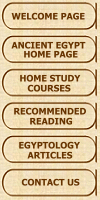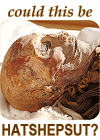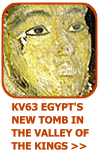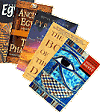|
|
|

Pages in this article: [ MEDICINE ] [ THE PHYSICIAN ] [ THE DENTIST ] [ TREATMENTS & SURGERY ]
Treatments and surgery
Before any treatment could be administered, the first course of action for the physician would be to make a diagnosis, employing his powers of observation and experience in determining the nature of the ailment. He would then refer to the medical papyri to determine the most appropriate course of treatment. Normally, this would take the form of an unguent comprised from a concoction of natural ingredients.
To describe the numerous diseases and their remedies is beyond the scope of this article. Therefore, I will include a brief synopsis of just a few of the numerous herbal remedies available to the Ancient Egyptian physicians.
Herbal remedies
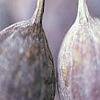 |
|
BLACK FIG: An effective remedy in the treating of bronchial infections also used as a laxative and thought to cure impotency.
|
|
CORIANDER: Extensively used for digestive ailments due to its cooling and stimulating properties.
|
|
CUMIN: Mixed with wheat flour and water to form a paste, which was then applied to arthritic joints.
|
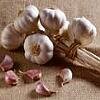 |
|
EMMER WHEAT: Ground up to make balms, ointments and poultices and applied to skin disorders.
|
|
GARLIC: Widely used as it was thought to aid endurance. In addition used to treat bronchial-pulmonary complaints.
|
|
HONEY: Found to be an excellent antibacterial and antibiotic, and as such was extensively used in the treatment of open wounds.
|
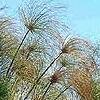 |
|
MINT: Assisted in the treatment of gastric disorders. When chewed, also provided a means of breath freshener.
|
|
OIL OF FIR: A natural antiseptic used to clean infected wounds.
|
|
PAPYRUS: Not only used to produce writing material but also used as a tonic or "pick-me-up" due to its restorative properties.
|
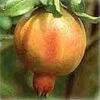 |
|
POMEGRANATE: Has a natural alkaloid (tannin) base, which is effective in paralysing a worm’s nervous system. When infused with water and drunk, it cleansed the body of the "snakes of the belly" i.e. roundworm and tapeworm.
|
|
POPPY: Broken down to produce a liquid which due to its narcotic properties made it ideal for pain relief. Added to water made an excellent sleeping draught.
|
|
WILLOW: Crushed to form a paste applied to teeth to relieve toothache. When used in conjunction with sycamore and acacia, was effective in healing burns.
|
Possibly the most common ailment in Ancient Egypt would have been eye disease caused by their constant exposure to the sun, sand and dust. Blindness was thought to have been curable if treated with bats' blood, considered to have restorative properties due to the fact that bats were thought to have night vision. A remedy for complete blindness was:
|
"Two pigs eyes with the humour removed, galena, yellow ochre, fermented honey. Crush, reduce and inject into the ear of the patient who will be cured immediately". (Ebers Medical Papyrus)
|
If medicine was prepared and administered according to the physician's teachings, he was exempt from all blame if the treatment did not work. However, if he deviated away from the traditional remedies and tried to increase his knowledge through experimentation, he risked taking full responsibility if it failed. It has been suggested that it was these principles that may have hindered the development of medicine in Ancient Egypt.
Surgical procedures
Due to the hard physical toil endured by the majority of the population, bone injuries such as arthritis, inflammation of a joint (which Ramesses II suffered from), bone-attrition, fractures, kyphosis (curvature of the spine), osteo-arthritis (chronic arthritis, degenerative due to trauma or age), rickets and amputations were a common occurrence.
|
Medical papyri tell us that the physician was able to characterise the different types of injury. The most common complaint was localised swelling "shefnut", a simple fracture "sedj" where the bone is broken in two, and "peshen" for a complicated fracture, where the bone has broken in several places.
|
|
A wall scene at Saqqara depicts the physician Ankh-Mahor (6th dynasty) treating two men who are having their extremities administered to.
The accompanying text reads "do not let it be painful", suggesting the possibility that some form of anaesthesia had been applied before carrying out the procedure.
|
Skeletal remains of pyramid workers show that fractured limbs were treated using modern techniques. The first procedure was to realign the broken limb (hopefully under some form of anaesthesia). The limb would then be set in either a wooden splint wrapped in bandages, or encased in a plaster cast made from cows milk, mixed with barley or acacia leaves and bound together using gum and water (Hearst Papyrus 219,223). In instances where the damage was so severe, amputation was an alternative course of action.
| Two skeletons bear witness to successful operations. Both skeletons show that the bone ends healed, indicating that both individuals went on to live a number of years after the operation. Another innovation was the use of prostheses (artificial limbs). |
|
A wooden bid toe has been found belonging to a fifty or sixty year-old woman. Designed to improve her walking capabilities after an amputation, whether it was ever worn or was added to her body after death to assist her through the Afterlife is uncertain.
|
| A prosthetic big toe discovered still on its mummified foot, is in the exhibit. It was among artefacts recovered from Tomb 95 that was built during the reign of Amenhotep II. The artefact was discovered in debris inside the shaft. It had with it the linen wrapped foot and leg, which show evidence that the amputation was cleaned, and prepared for the device. The amputation is completely healed which indicates that the owner lived long after the accident using the prosthesis. |
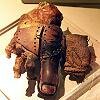
|
Other false limbs have been discovered on mummies, such as an arm, feet and a penis. As to the surgical instruments available to the physician to carry out such operations, it is not certain.
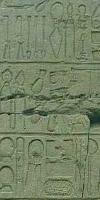 |
Before the advent of bronze and iron implements, the physician would have used a knife made from flint or obsidian, a black stone sharper even than today’s modern stainless steel blades. Moreover, the introduction of metal blades brought about the need to cauterise a wound. Ancient texts tell how the blade was heated until it glowed red before an incision was made, sealing the cut at the same time.
At the temple of Kom Ombo, a box of surgical instruments has been carved into the outer corridor wall. The box contains thirty-seven instruments, including metal shears, knives, saws, probes, spatulas and spoons. Once thought to be of Egyptian origin, it has now been identified as originating from the Roman Period.
|
| Kom Ombo relief |
Evidence of medical treatment has been found on the mummies of Old Kingdom pyramid builders, dismissing the notion that the workforce consisted of slaves.
| The workforce enjoyed a high calorific diet and benefited from a form of health service. There was not age limit or exemption from working on pharaoh's building projects, however an exemption could be granted on the grounds of incapacity, in which case a pension could be awarded. Injured employees were afforded the right of "light duties". |
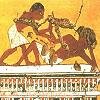 |
| The Turin Papyrus states that "neither sick nor broken were commanded to lift stones". Working hours were also regulated, recorded as four hours in the morning and four in the afternoon, with a meal and a nap in between to avoid sunstroke. There is evidence attested to of a temple worker who sustained an industrial injury, and was able to make a claim against the temple for his medical expenses. |
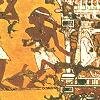 |
In conclusion, if one had to be ill in antiquity, Ancient Egypt would be the preferred place. Their physicians' medical knowledge was without equal, and techniques and treatments administered back in those ancient times are comparable to today's medical profession.
If, after exhausting all avenues open to him the physician could do nothing else, magic was favoured to drive out the evil influences. The ill could also petition their dead ancestors to intervene and come to their assistance. But as a last resort, in case of magic failing, the incurable was left knowing that they entrusted their recovery in the hands of the gods.
Return to main article page >>
|
|
|


